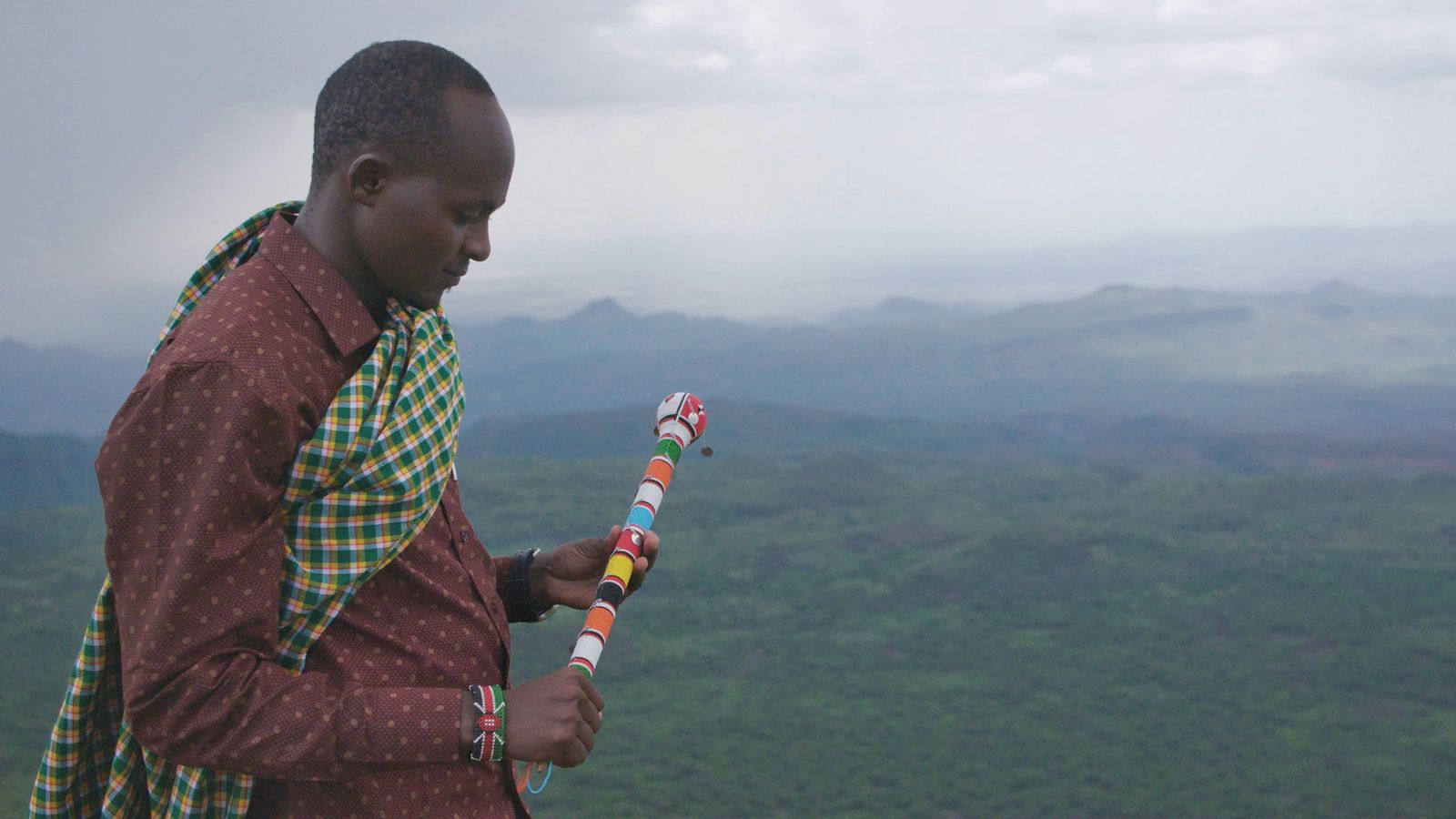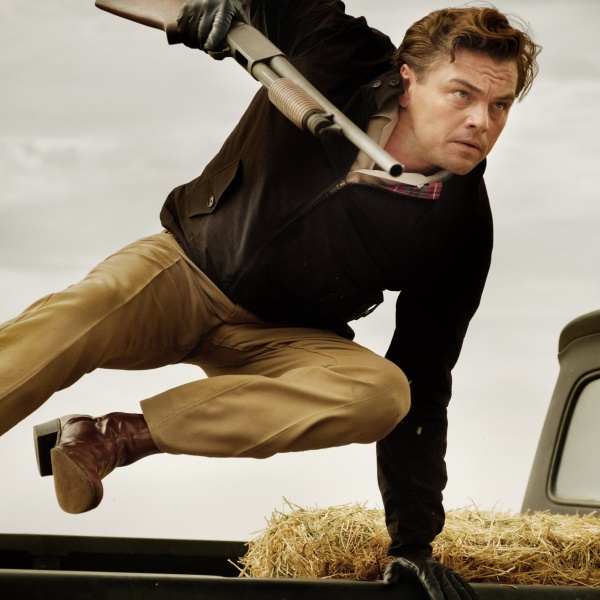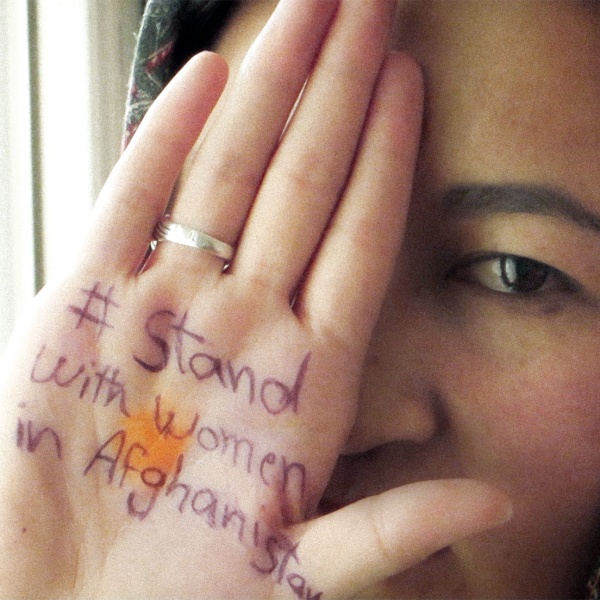When film composer and multi-instrumentalist William Ryan Fritch got the call to work on the new Sundance documentary, “The Battle for Laikipia,” he remembers his first reaction. 20 to 24 cues in two and a half weeks. Wow. But after watching the film, it was a no-brainer. “I’ll figure out the how,” he said.
Co-directed by Daphne Matziaraki and Peter Murimi, “The Battle for Laikipia” follows the story of Indigenous pastoralists — farmers who breed and care for animals in the wildlife conservation haven of Laikipia, Kenya — as they struggle to overcome conflicts with landowners and the impact of colonialism.
“It’s just take-your-breath away, raw, arresting humanity, done so exquisitely well,” says Fritch.
Fritch says his admiration for the film’s crew made it an easy decision to join the sprint to finish the production in time for the 2024 Sundance Film Festival.
“I knew they were extraordinarily thoughtful, ethical documentarians,” says Fritch. “I had worked with Daphne Matziaraki on her Academy Award-nominated short “4.1 Miles.” She’s a rare and special talent. Her directing partner, Peter Murimi and the editor, Sam Soko have made some of my favorite documentaries of the last couple of years.”
Here’s how Fritch pulled out all the stops to meet the deadline — while using Dropbox Replay to make his review process as fast and efficient as possible.

How do you go about finding the right sounds to convey the tone of a film like this?
The instrumentation for this is largely based around string ensemble and harp. I played the kora and other string instruments that aren’t necessarily native to Kenya, but I knew I could modify in a way that felt like it was its own kind of language for the Samburu tribe. It left space. It wasn’t trying to emulate Samburu music, but it could have this sound of conflict.
I was totally taken by the film, so I was cranking out about five cues a day. No time to do spec for virtual instruments. It was like, the microphones are rolling, tape is rolling, and everything has to be my best shot. They were like, “We love this. Let’s go!”
Could you describe how you used Dropbox Replay to incorporate feedback from the crew when you were working so far apart?
It’s an 11-hour time zone difference between Nairobi and where we are in California. So I’m starting my day as they’re ending their day. Daphne was in Greece. Peter was in London. The editor was in Nairobi. I needed a way where they could all have a chance to review the music and the timeline.
I would post the video in Replay, process all of the comments, mark and tag the feedback. Then I’d be looking at it and taking notes as we’re going from fine cut to rough cut. I’m adjusting it, like, “This music is a little too thick. It’s covering up the VO here. This might move.”
I have to think of this film in these digestible pieces, but I also might be getting feedback from something I did three or four days ago while I’m still having to write a significant amount of music. So using Replay is not like reading a list or flitting down a Google Sheet. I have the picture up on one of my screens.
How do you stay organized when you’re getting feedback while you’re still composing?
The fact that they were going off what I gave them through Dropbox, they could tell me, “Hey, 30 seconds into this clip, it’s this.” That could be so confusing if they gave me a cut that didn’t have timecode embedded. With Replay, I can just be like, “These are the videos. Let’s make the note where it is in these particular exports.” I’ll be able to go and address that in the music. It just kept me from losing my focus.
When I got the full score together, I was able to just export a whole run of it. It’s easy to get lost when I’m focusing so hard on *this* five minutes that I forget how it ties into the whole film. But a beautiful thing about clearing this cache in Replay was that, I’ve resolved these things. I can export larger chunks. Now we’re gauging how pieces are working. Then by the end, where we got to the final mix, we were just talking the finer details of “I wouldn’t mind hearing this theme again” because we’re digesting it as a bigger piece.
What was the advantage of using Replay compared to other tools you’ve tried?
With Replay, I was controlling the media that was being reviewed. Then as I clear it and offer a new pass of it, I can just get feedback from the filmmakers respectively. Just bang, bang, bang: resolved! What do you all think? It was so much more native, because that’s where I’m housing my files anyway and how I’m getting it to the filmmakers. This wasn’t an option for me even a couple of months ago.
This development means that I can simply share the link with someone. They don’t have to be a member of Dropbox to be able to view this or give notes. I found it really liberating that I could take advantage of that very specific and accurate note annotation for files that I’m uploading. And it was in my native Dropbox desktop. I’m just exporting that straight from Logic and mixing it. I don’t have to be thinking about: Did I share the files? Did someone else export it and sync it up to their account for film team stuff? It was empowering for me, as someone who’s worked with Dropbox for years, that there was suddenly a tool that I could use to review feedback seamlessly in my workflow. I really enjoyed that.
Is this the fastest you’ve ever had to turn around a film score?
No, but this was the most gracefully handled by the film team. They’re all pros. They’re also really generous collaborators in the fact that I think they knew there was a lot to be gained and that things could be a lot better than the temp music they were using. So I feel like I walked into such a loving, deeply supportive, creative environment. I’ve been in situations where it’s been a similar timeline, but not with this kind of support. The whole time I was doing it. I was excited to try and make it better. And when you have that urgency, you shut off some of the the overanalysis paralysis. But I turned in the last files, then I got pneumonia. So it took its pound of flesh, but there was a lot of joy and motivation to just keep going, keep giving until you’ve emptied the reserves.
What motivates you to work through night to finish scores for festival films like this one?
75% of all my work is with journalists and documentarians. I think one of the reasons I keep coming back to it is that filmmakers spend years of their lives making a film. The profound sense of responsibility they feel to the film’s subjects, to shepherd and to tell this story with integrity, love, and circumspection—it’s so profoundly humbling. I’m with a film for two and a half weeks, but it’s at the end, where these filmmakers and producers have just given everything. It’s new to me, so it’s my job to be a catalyst of enthusiasm and energy.
What do you hope audiences feel when they hear your score while watching the film?
The musical language that we landed on is close to my heart because I love acoustic sounds and organic instrumentation. I’m building the structure off of environmental sounds. So I just want the resounding feeling that the music empathetically and appropriately serves the plight of the human beings going through this battle for resources. I’m hoping it serves this profoundly impactful story.
“The Battle for Laikipia” premiered at the 2024 Sundance Film Festival January 21 in-person and January 25 online. For details, visit festival.sundance.org
This interview has been edited and condensed for clarity.
Dropbox supports and champions independent makers, crews, and teams behind the camera who bring their unique perspectives to life at the Sundance Film Festival. We’re proud that over 60% of films at the 2024 Sundance Film Festival leveraged Dropbox in their filmmaking process.It takes a monumental effort for film projects to go from ideation to completion, and Dropbox is dedicated to helping filmmakers get their projects across the finish line faster. Filmmakers used Dropbox as one organized homebase to keep video files secure, to remotely collaborate with teams around the world, and to get real-time video feedback with Dropbox Replay.






